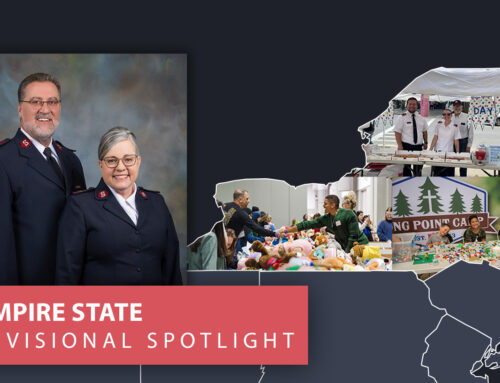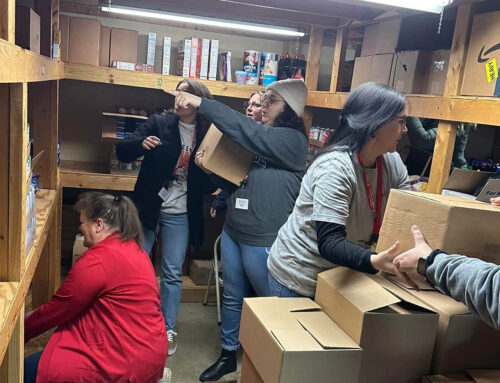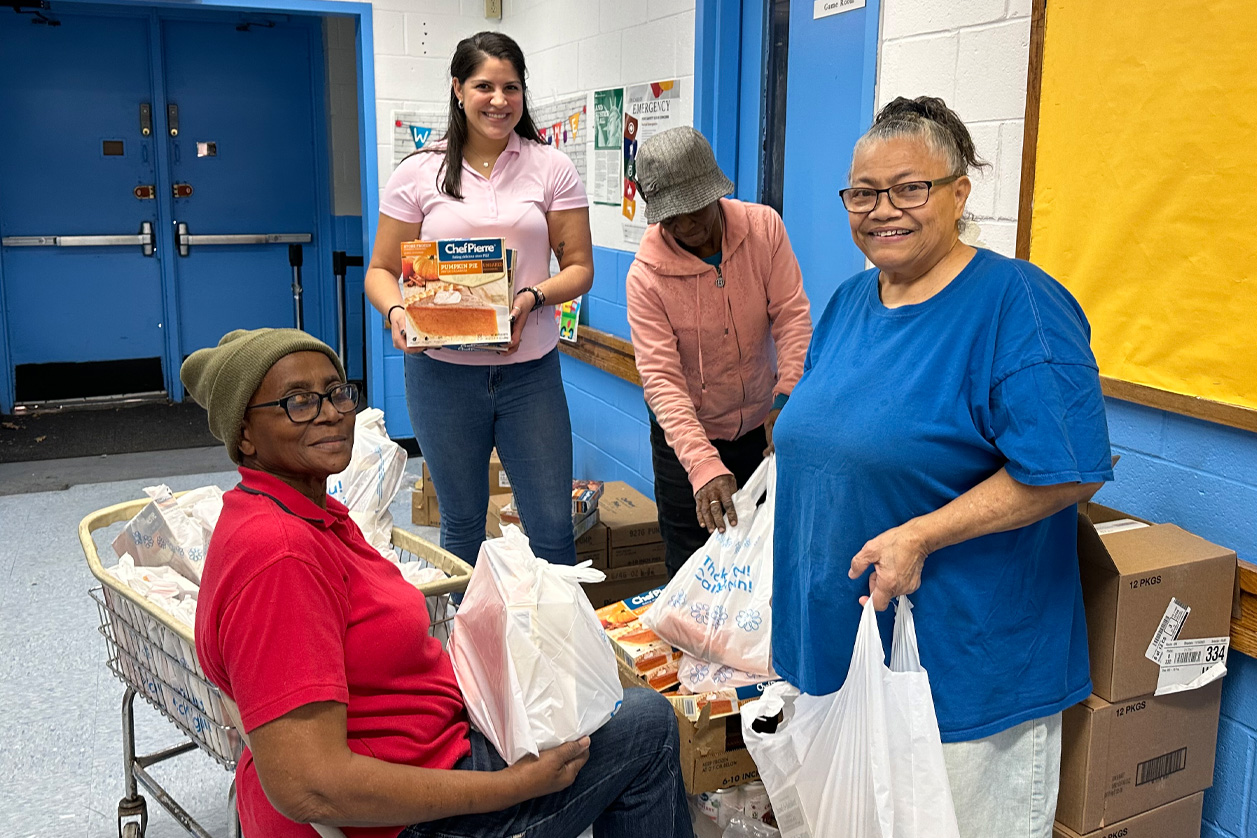
‘Feeding the Stomach’ in Brownsville
by Robert Mitchell
Lieutenant Valentina Agudelo hears a common refrain from the folks coming to the food pantry at the Brooklyn, N.Y., Brownsville Corps: A trip to the grocery store that might have cost around $170 a few years ago is now in the $300 range.
To help meet the need, twice a month for three days per week, the corps offers a food pantry that draws 200 families. They estimate the pantry served up the equivalent of 580,000 meals in 2023—and nothing is slowing down.
“We’re seeing numbers we’ve never seen before,” Agudelo said. “There are way more people coming and asking for ways that The Salvation Army can help.
“I think there’s just so many people concentrated in a very small area. There also are tons and tons and tons of fast-food places and restaurants, whereas there aren’t that many grocery stores for so many people.”
The food pantry is set up outside the corps in tents. People bring their own carts and walk through the “choice” pantry to receive such goods as cereal, juice, meat, fruit, rice, and canned goods.
“It’s a good little safe haven…It helps out for those who need it. Kids and all. It does help so I appreciate it,” Kim Thomas, a resident of Brownsville, told News 12 Brooklyn.
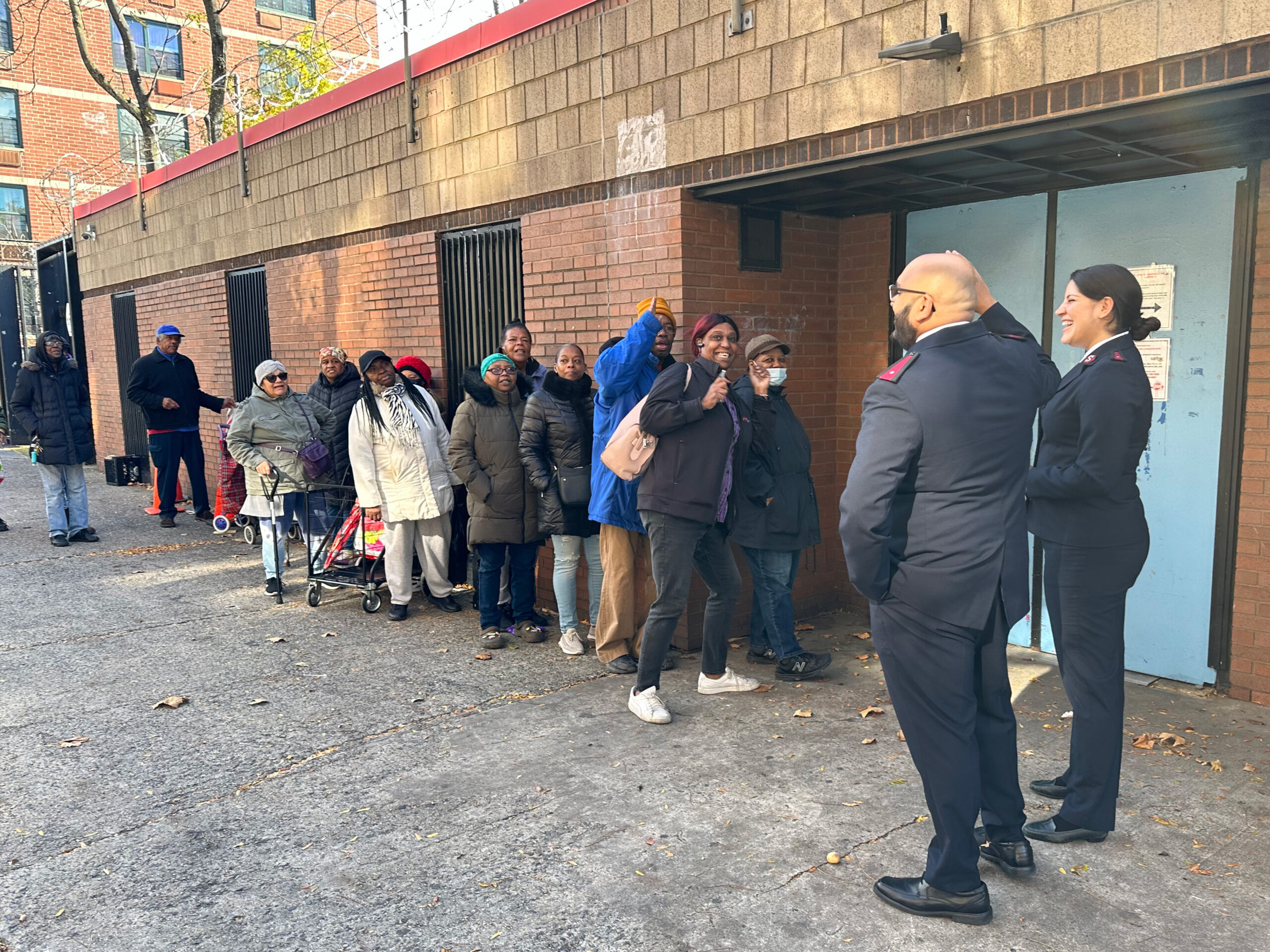
Early-bird arrivals
Agudelo said it’s not uncommon for people to line up outside the corps on Riverdale Avenue an hour earlier than the 10 a.m. opening. Among them are several African American, Caribbean, and Asian families who are mostly native New Yorkers. Some are unemployed; many others work but are simply being crushed by inflation and the high cost of living.
“Brownsville is considered one of the most impoverished communities here in Brooklyn,” said Charlene Williams, the social ministries assistant at the corps. “People cannot afford the prices of food today. People have to decide whether to eat or pay their rent.”
A 2022 report from the New York City Council pegs the food insecurity rate in Brownsville at 31% compared with 13.5% nationally. As Agudelo noted, Brownsville is in a “food desert,” an area where people lack access to healthy food options. The bodega-to-supermarket rate is 15-to-1 and 20% of adults reported having no fruits or vegetables the day before, according to the New York City Food Policy Center at Hunter College.
Besides the food pantry, the corps helps about 200 families a few times a month through a program called Surplus, which gives away fresh produce on a first-come, first-served basis. The produce comes from City Harvest, a food rescue organization.
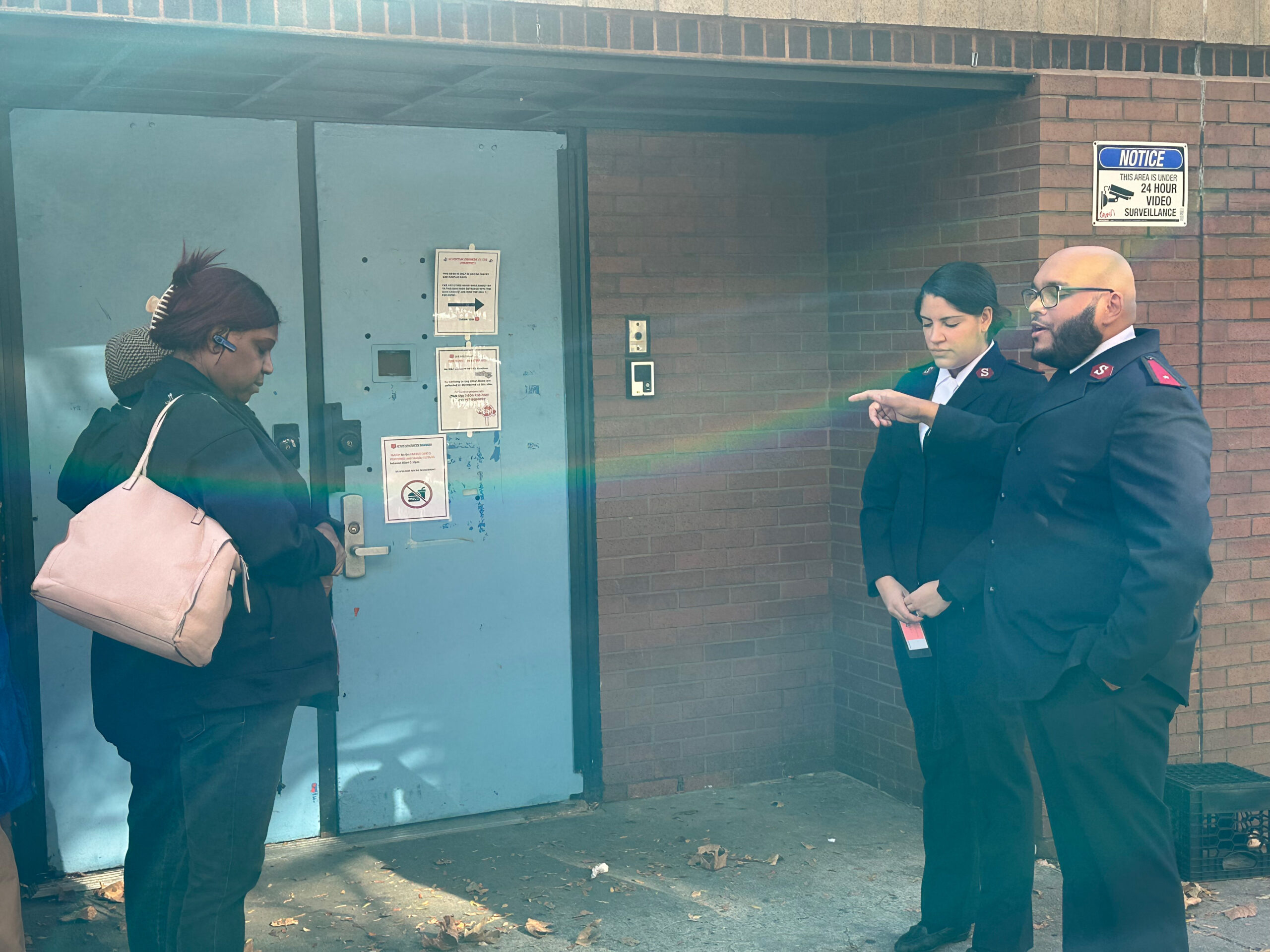
A spiritual side
“There’s no greater feeling than being able to help,” Agudelo said. “Surplus brings a lot of happiness and joy because it’s free, and it’s produce. It’s not just canned food. We get pears, mangoes, and all the good stuff.”
Whether it’s the food pantry or the produce giveaway, Salvation Army volunteers stuff copies of SAconnects and War Cry magazines in every food box, along with an invitation to church. Agudelo and her husband, Lieutenant Nereus Mogaria, arrived in Brownsville last year and are also available for prayer.
“My husband and I try to be there when we can just to get to know our community and the people coming through our line,” Agudelo said.
“It would be easy not to do it especially because we see rising numbers all the time, but we believe in what William Booth believed in—first feeding the stomach and then feeding the soul. It just brings us a lot of happiness and a lot of joy to be able to tangibly help out the community.”
For more about the Brooklyn Brownsville Salvation Army, go to: facebook.com/brooklynbrownsvillecorps


